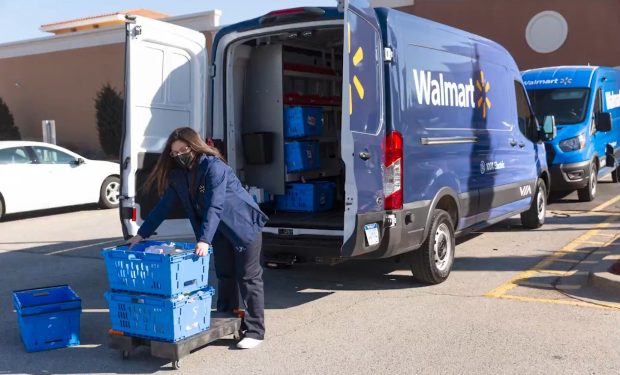Walmart White Label, Last-Mile Service Aims to Monetize the Competition

Walmart’s announcement at the end of last month that it is launching GoLocal, a last-mile delivery service for other retailers, reveals some truisms in the age of digital commerce, in the age where size matters as much as it ever did:
If you’re big enough, if the scale is in place and the operations flexible enough — you can monetize any part of your operation. You can even monetize services, in B2B fashion, you provide to the competition.
To that end, logistics is what matters this holiday season, the one that is looming, but which, amid the frenzied consumer buying we’ve seen the past year and a half, may simply be more of the same. Consumers will continue to point and click, ordering things to be delivered to their doorsteps, with ever shrinking delivery windows.
Those firms that have not sought, or have not been able, to modernize their logistics operations are in for a pinch.
White Label Service
At a high level, Walmart is offering GoLocal as a white labeled delivery-as-a-service option to help smaller firms to tap into the commerce behemoth’s logistics network.
Read more: Walmart Launches GoLocal
In terms of scale, as has been noted in this space, Walmart has brought more than 160,000 products to the doorsteps of some 70 percent of the population in the U.S.
In the midst of the GoLocal launch, of course, we’re seeing supply chain shortages wend their way across the globe. Semiconductor chips are not exactly plentiful. Port traffic is snarled. Consumer demand? Well, that’s going to continue unabated, to say the least, barring some unforeseen event (or, we contend, some massive spike in COVID variants and a negative shock to the economy).
Also read: Supply Chains Could be the Grinch That Steals Retails 2021 Holiday Season
That means that the last mile will become ever critical for the companies that do have inventory on hand to get to individuals and families as the holiday season takes shape.
In terms of cross-pollination, after a sense, the GoLocal deliveries will be handled by gig workers who in turn work for the company’s Spark Driver business. In this way, much of the service is kept in house, and there’s a bit of competition with the third-party offerings such as DoorDash and Uber Freight (which connects shippers and carriers).
Walmart has said on its GoLocal site that, in terms of how it all will work, the GoLocal enterprise customer will order directly from a small business. The small business’s own commerce platform will “ping” Walmart, Walmart GoLocal will dispatch a delivery driver, and then collect relevant feedback to give to the business. We contend this is a way for Walmart to make at least some money off of the pressure points that may bedevil (much) smaller peers. The attraction for those smaller competitors, of course, is that they need not ramp up or scale down their own operations into the ebbs and flows of consumer demand. Might it also be the case that at least some of these smaller firms may be able to get their products onto Walmart’s (real and virtual) shelves? Partnerships lead to partnerships, and perhaps.
Walmart’s timing seems fortuitous. Consider the fact that, as PYMNTS has found, consumers are likely to stick with their online buying habits into the rest of the pandemic, and beyond. Recent data show that 52 percent of more than 5,200 consumers have been making buy now, get now purchases from delivery aggregators. Elsewhere, 50 percent of consumers are making more of those purchases than they did before the pandemic hit.
See also: 5,000 ‘Need It Now’ Consumers Tell PYMNTS What They Expect, Value Most From Retailers
